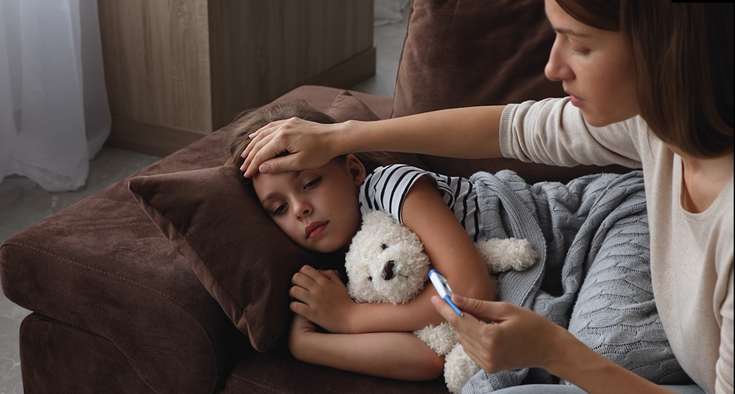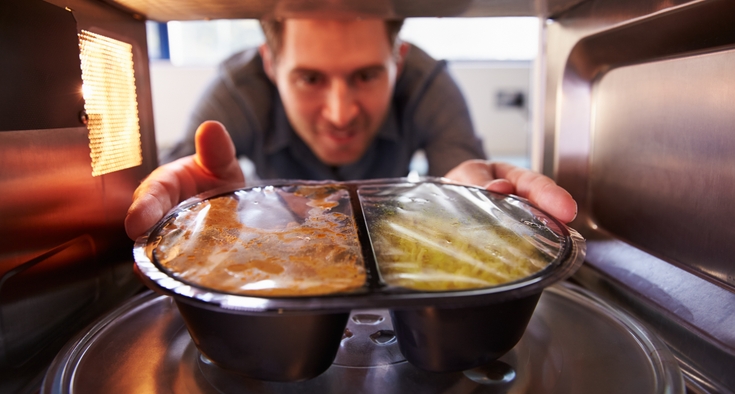A fever is the body’s response to a virus or infection like flu or RSV. And while a temperature isn’t always cause for worry, you should seek immediate medical care for your child if theirs spikes above 100.3 degrees.

How can parents ensure an accurate reading? For starters, finding the right thermometer depends on the child’s age and ability to tolerate the type you’re using, said Dr. Matt Meccariello of Novant Health Forsyth Pediatrics - Westgate.
But it all starts with tuning in to your child’s behavior.
“Overall, if your child isn’t acting right or is super-tired, it’s time to notify your pediatrician,” Meccariello said. “We take fevers more seriously when the child has underlying conditions or is immunocompromised.”
Remember: Novant Health pediatric offices offer same-day appointments and a 24-hour guarantee. Patients can access MyChart to make an appointment, and even opt for a phone or video visit. If your doctor has online scheduling but you don’t see any opening, by all means call the office. There’s a strong chance they can work you in.
In the meantime, the American Academy of Pediatrics says to clear your cabinet of glass thermometers, which break easily and contain mercury.
Where to start? From oral to contactless thermometers, Meccariello walks through the options for the most reliable readings.
Your child deserves the best care.
Which thermometers are most accurate for kids?
The most accurate is a digital rectal thermometer because it measures core temperature. But we only use those in our kids younger than 2, given the discomfort for older children.
Another accurate option is a digital oral thermometer, as long as the child can properly aim and hold them under their tongues. Overall, I’d recommend a non-contact infrared thermometer, which is very common for screening at schools. It gives quick readings, is less likely to pass germs, and can be used for virtually any age as opposed to the under-the-tongue thermometer.
Parents should note one limitation of non-contact thermometers: readings can be off if your child has recently been exposed to cold temperatures, or to sunlight while having their temperature checked.
Which thermometers are not so reliable for kids?
An in-ear thermometer measures the temperature of the eardrum and requires careful reading of the instructions for proper positioning; otherwise, they don’t ensure an accurate reading.
The least accurate thermometer is the type used under the arm, because it measures skin temperature and can give imprecise readings if not placed correctly within the armpit.
There has probably never been a parent who didn’t feel their kid’s forehead to check for a fever. What’s your take on that method?
I think ultimately, checking the temperature with your hand has too many variables that lead it to be inaccurate. If you think your child is sick and feels warm, always double-check with a thermometer.
When is a high temperature bad, or not so bad, for kids?
Our highest-risk kids are infants. If your baby is not acting right, check their rectal temperature. Fever is anything above 100.3 degrees, and at that temperature children younger than three months should be seen right away.
For our infants younger than one month, we also worry about cold temperatures. Anything lower than 97 degrees can indicate a bacterial infection.
It’s also important for parents to watch their child’s behavior. If they’re active and happy even with a temperature, you can notify your doctor and get some information over the phone and keep an eye on them. Kids older than six months can use Children’s Tylenol (acetaminophen) or Motrin (ibuprofen) to reduce the fever.
What’s the best way to put our child at ease in the meantime?
Stay calm, even if you’re not calm on the inside. Sometimes it’s hard to hide those emotions, but explaining to your kids why you’re worried goes a long way: “I can see you don’t feel well, but I’m going to do everything I can to help you feel better.”
You know your kid best. So if you feel like something is wrong, reach out to your doctor. That’s what we’re here for.













